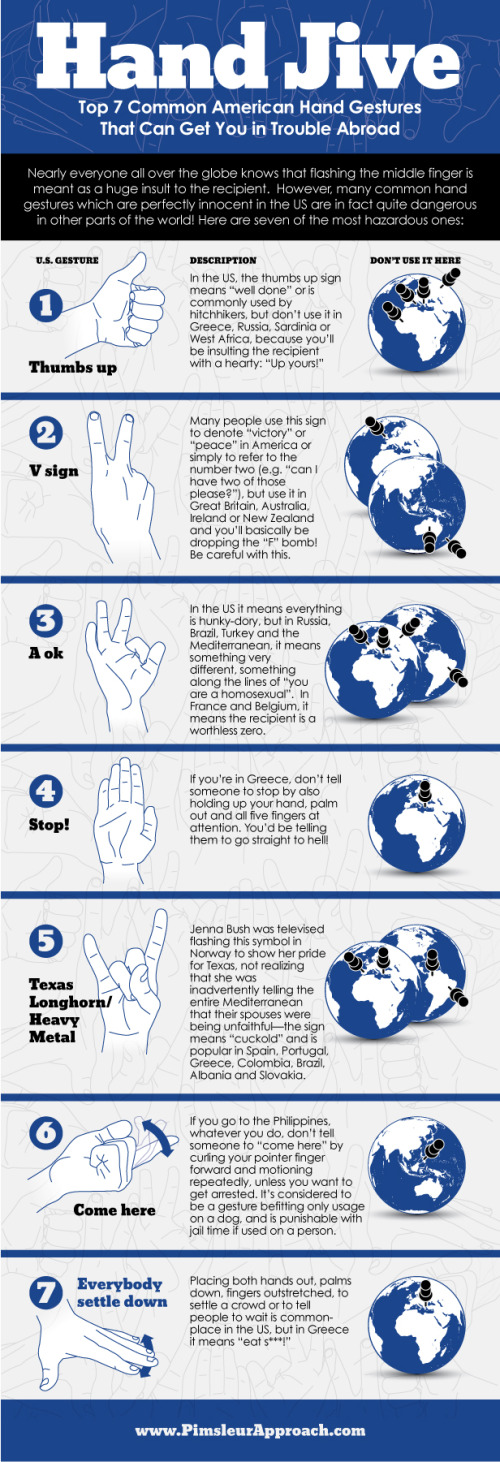Hand Jive: Gestures That Can Get You in Trouble Abroad
The Hand Jive-Hand Gestures Infographic from Pimsleur Approach takes you on a world tour of what common hand gestures from America mean elsewhere (for better or worse).
Nearly everyone all over the globe know that flashing the middle finger is meant as a huge insult to the recipient. However, many common hand gestures which are perfectly innocent in the US are in fact quite dangerous in other parts of the world!
This is a great topic for an infographic because it’s so visual. You have to show the actual gestures as illustrations in order to communicate effectively with the reader. The pins in the globes are easy to read, and a refreshing visual that’s different from the standard flags on a map.
Simple message, focused topic, easy to understand. Good design. For an infographic, the URL at the bottom should link you directly to the original infographic posting instead of the company front page, and some type of coyright statement is missing.
Thanks to Sarah for sending in the link!









 Randy
Randy

Reader Comments (10)
"Flicking the V's" as it is called in the UK is when you use your two fingers with the back of the hand facing the recipient. If this is reversed and the palm of the hand faces the other person (and fingers/thumb are thus visible) it is just the same meaning of peace/two please.
This gesture dates back to the time when bowmen had their fingers cut off, and so was an insult of "Look, I have my fingers and you don't!" - as to whether this was to the French, or from them, I can't remember.
#3 is not used in France, it doesn't mean anything and speacially it doesn't mean "You are a worthless zero".
#1 Is used by hitchhikers in Greece (as everywhere) and #4 is commonly used to say "Stop"
#2 is offensive in UK only if the back of the hand faces the other person, otherwise it means "Victory" and it's widely used with that meaning.
... so where did you guys get the information?